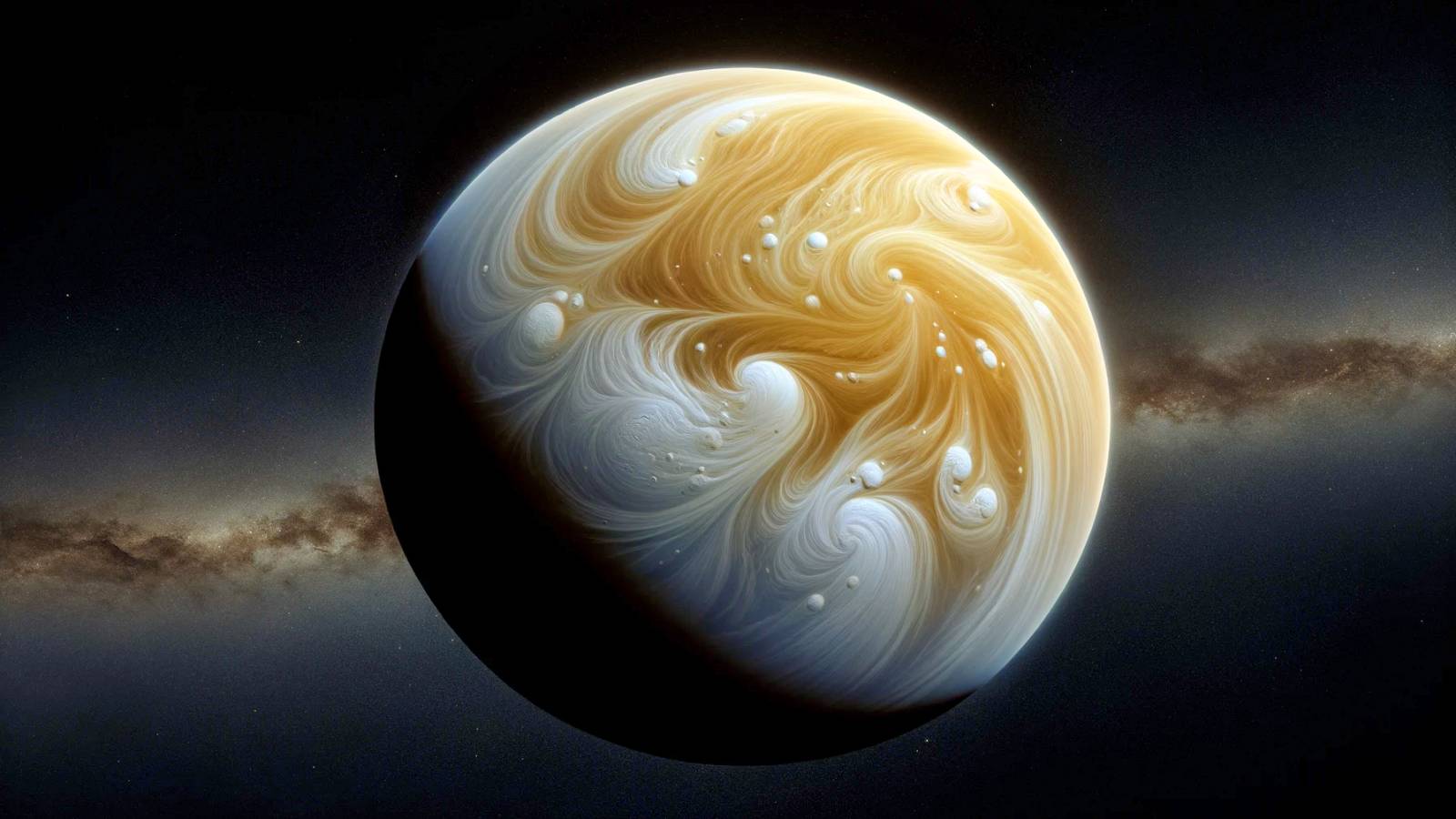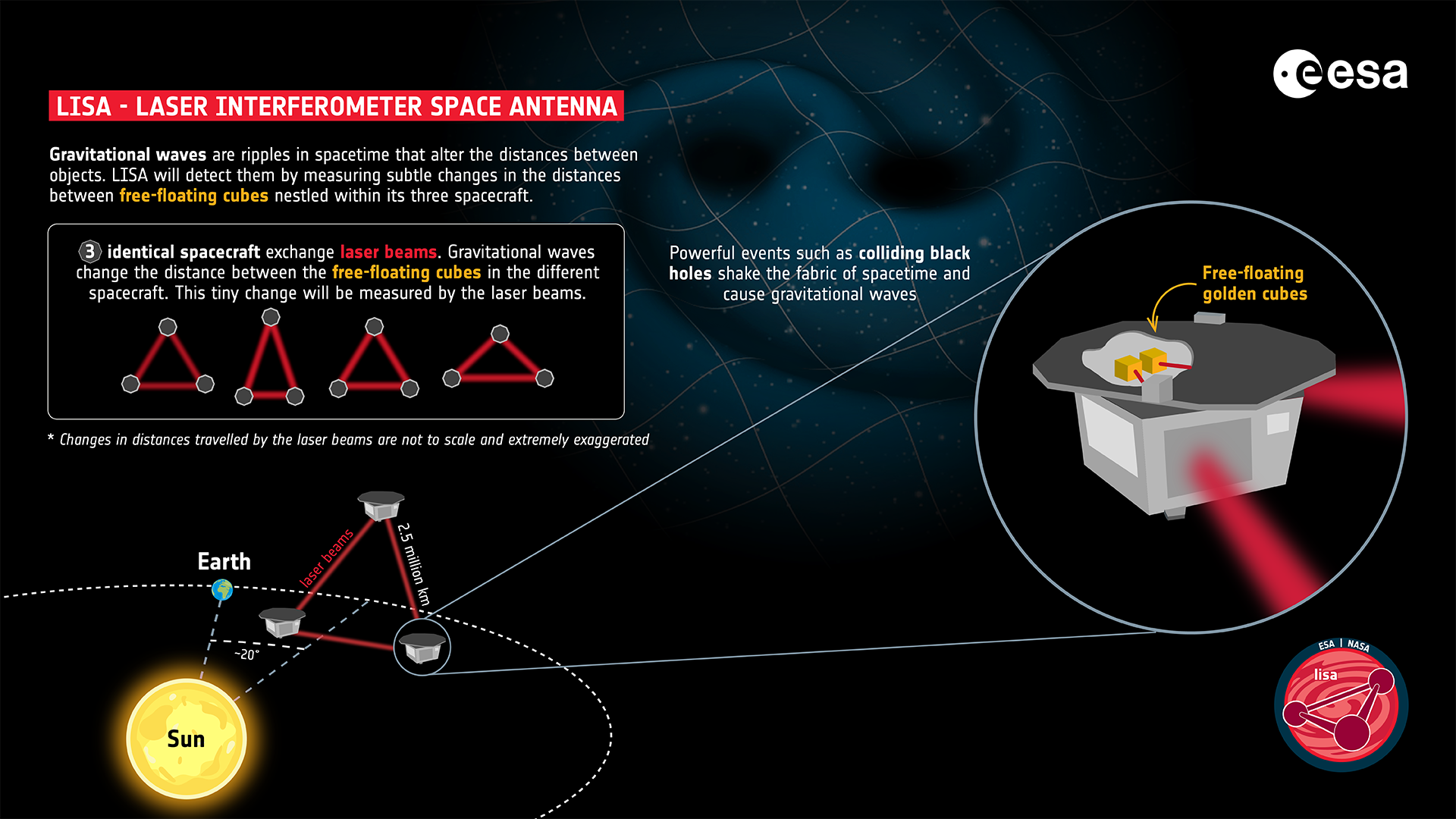Astăzi marchează un moment istoric în explorarea spațială: Comitetul pentru Programul Științific al ESA a dat undă verde misiunii LISA (Laser Interferometer Space Antenna). Aceasta este o inițiativă fără precedent, primul efort științific de detectare și studiu al undelor gravitaționale din spațiu.
Această „adopție” oficială recunoaște că tehnologia și conceptul misiunii sunt suficient de mature pentru a trece la etapa construcției instrumentelor și a navelor spațiale, lucrare care va începe în ianuarie 2025, după selecția unui antreprenor industrial european.
LISA nu este o simplă navă spațială, ci o constelație de trei nave care vor urma orbita Pământului în jurul Soarelui, formând un triunghi echilateral extrem de precis în spațiu. Fiecare latură a acestui triunghi va măsura 2,5 milioane km, iar navele vor schimba fascicule laser între ele pe această distanță enormă. Lansarea acestora este programată pentru 2035 cu o rachetă Ariane 6.
Realizarea LISA este posibilă datorită colaborării între ESA, agențiile spațiale din statele membre, NASA și un consorțiu internațional de oameni de știință. Această colaborare multidisciplinară demonstrează angajamentul global pentru avansarea cunoașterii științifice.
ESA Anunță o Misiune foarte IMPORTANTĂ catre Planeta Venus
Cu peste un secol în urmă, Albert Einstein a prezis că obiectele masive accelerează și zguduie spațiu-timpul, creând undele gravitaționale. Astăzi, grație progreselor tehnologice, suntem capabili să detectăm aceste semnale subtile.
„LISA este un efort inovator care va folosi raze laser pe distanțe uriașe pentru a detecta aceste unde gravitaționale, deschizând astfel un nou orizont în studiul gravitației în spațiu”, explică Nora Lützgendorf, conducătorul de știință al proiectului.
Misiunea LISA va extinde posibilitățile de observație, detectând undele gravitaționale cu frecvențe mai mici decât cele posibile pe Pământ. Aceasta va permite oamenilor de știință să exploreze evenimente cosmice de o magnitudine nemaiîntâlnită, de la nașterea galaxiilor până la coliziunile găurilor negre uriașe.
O contribuție fundamentală a LISA va fi înțelegerea originii găurilor negre masive și rolul lor în evoluția galaxiilor. Misiunea va capta, de asemenea, „sunetul” gravitațional din primele momente ale Universului, oferind o perspectivă unică asupra Big Bang-ului. Mai mult, LISA va ajuta cercetătorii să măsoare expansiunea Universului, oferind un nou tip de criteriu pentru aceste măsurători.
Pe lângă descoperirile cosmice, LISA va avea un impact semnificativ și mai aproape de noi, în galaxia noastră. Detectând perechi de obiecte compacte care fuzionează, cum ar fi piticele albe sau stelele cu neutroni, misiunea va oferi o perspectivă inedită asupra evoluției acestor sisteme și va îmbunătăți înțelegerea structurii Căii Lactee.
Oliver Jennrich, un alt om de știință al proiectului LISA, subliniază importanța acestei misiuni: „Până acum ne-am bazat pe observarea luminii pentru a înțelege cosmosul. Adăugarea detectării undelor gravitaționale deschide o dimensiune complet nouă în percepția noastră asupra Universului, similar cu trecerea de la filme mute la filme sonore.”
Această misiune, fără îndoială, va schimba fundamental modul în care înțelegem spațiul și timpul, oferind o privire nouă și profundă asupra misterelor Universului.























